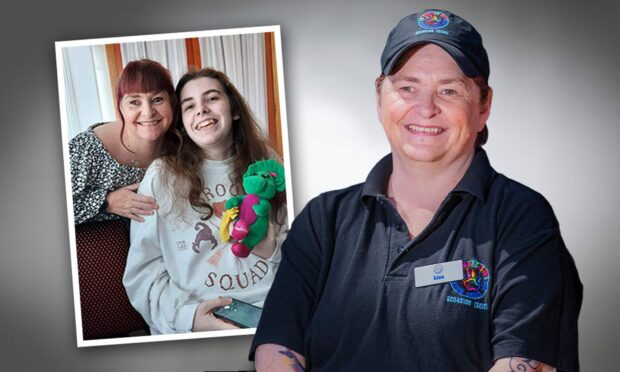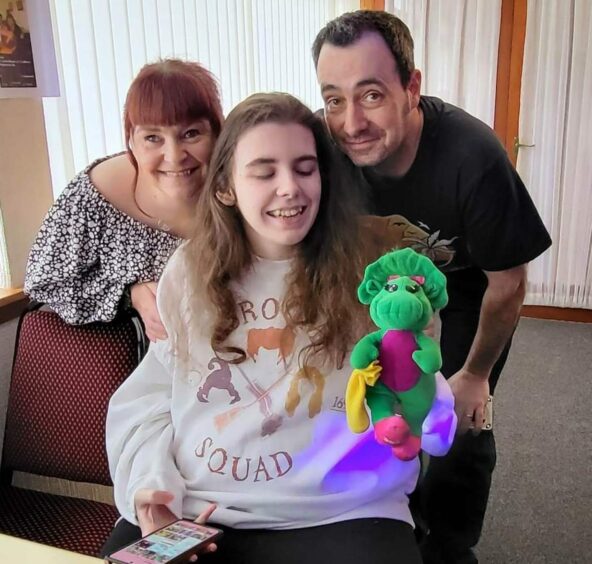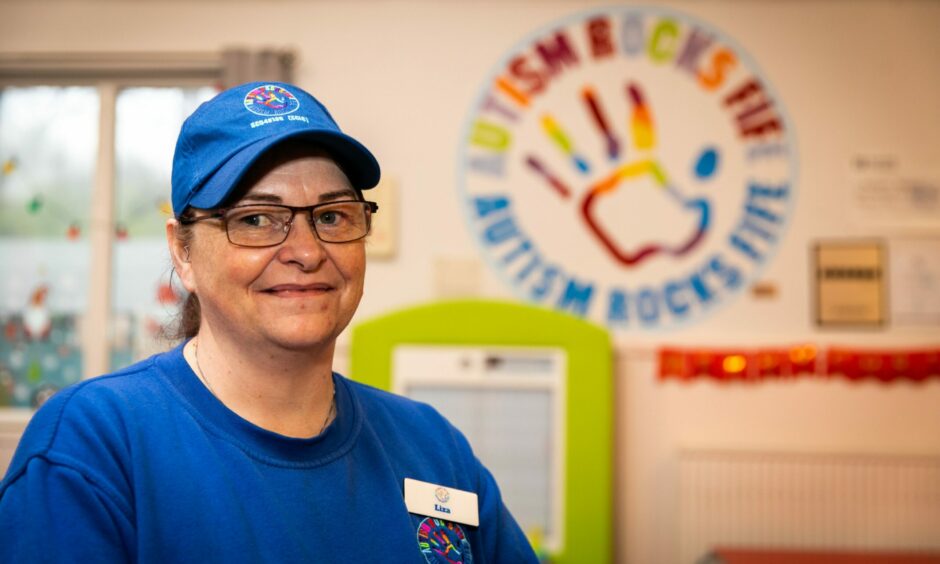Alannah, 19, has autism and missed her entire fourth year at secondary school after refusing to return through fear of bullies.
School avoidance is a common issue for autistic children who can struggle with the noise, social interactions, routine changes and many more challenges school can present.
Alannah’s mum Liza Quin initially tried to force her to return to the additional support needs unit at her Fife school but gave up after an “absolutely horrific” two weeks.
As well as autism, Alannah, from Methil, has learning disabilities, sensory processing disorder and pathological demand avoidance.
She did well in primary school, says Liza, but things went downhill in secondary school.
This started off with being unable to see her new school properly during transition from P7 to S1.
Then she had to cope with sharing a building with five times the number of pupils as her primary school.
Departure of her key worker prompted further upset and school transport was a recurring obstacle, with a different minibus driver or being unable to get the seat she was used to causing distress.
But the breaking point was encountering some girls who had bullied her at a previous school in the final days of S3. Nothing could persuade Alannah to go back.
Liza said: “After the summer holiday I got her in for two days and that was it.
“I tried to force her into school for two weeks and it affected both of us too much, it was absolutely horrific.
She was literally terrified to go to school. I couldn’t put her through it any more.”
Mum Liza Quin
“She was becoming violent. She was literally terrified to go to school.
“I couldn’t put her through it any more.”
The family tried getting her to a special school but Alannah refused even to see education professionals in her home.
Still registered with her school, Alannah was given work to do at home with Liza and she gained some National 2 and 3 qualifications.
Liza had hoped she would go to college but the idea of returning to an educational setting was too much for Alannah.
Liza runs Fife charity Autism Rocks and said the schooling challenges Alannah encountered are common among families like the Quins.
She said: “Alannah was a great masker. When she was in school they were like ‘everything is perfectly fine, she’s happy, she’s this, she’s that’. But when she came home it was like a volcano erupting. Home is her safe space.
“A lot of autistic families will say the same. Kids will mask at school but when they get home everything goes.”
More in our school refusers series:
- Dundee teenagers reveal why they won’t – or can’t – go to classr
- Fife counsellor says bullying and violence can make children too scared to go to school
- Angus parent reveals anguish of daughter too anxious for school
- The Dundee teachers helping teenagers so anxious they are housebound
- The law and advice for when kids won’t go to class
Liza said: “The PSAs (pupil support assistants) but were fantastic. But there’s a lack of resources, a lack of funding and a lack of teachers. That had a big impact on Alannah’s education and she lost out on so much.”
More than one in three children in Scotland’s mainstream schools are classed as having additional support needs.
Autism and school refusal
For those of them with autism like Alannah, going to school can be terrifying and overwhelming, according to Scottish Autism deputy CEO Charlene Tait.
She said: “It can make children physically and mentally unwell.
“You might get through one day, then there’s anticipation of having to go through the next day.
“What is quite common is children who are really hanging on by their finger tips, they’re going to school, getting through the day and kaboom, the anxiety, the anger, the upset comes out at home.
“That’s difficult for parents because the school is saying ‘we don’t see that, we see a child who is performing’.
“Often those situations escalate and lead to absence when children cannot put one foot in front of the other and get out the door.”
She hears of children with autism out of school long term for a year or more.
But characterising them as ‘school refusers’, she said, puts the responsibility onto them and their families.
She said: “Actually it is the school system refusing them.
“A lot of the issues are around the school environment, the inflexibility of school.”
How can schools support autistic students?
Some schools, she said, are better than others at making adjustments, such as allowing soft starts.
She said: “I’ve come across schools who really want to work with the child and family and find a way forward.
“I’ve also encountered parents who are told, ‘you need to get your children to school, that’s it, it’s your legal responsibility to get them to school’.
“There’s not a standard protocol around absence issues and often that pressure to get a child to school makes it a million times worse.”
She said communicating with children and young people to establish their stressors can help adjustments to be made, whether that’s missing subjects like woodwork or home economics where noises or smells could be distressing or ensuring the one food they will eat at lunchtime is always available.
She said: “That little adjustment can be the difference between that child having a successful day at school and being able to come to school.”













